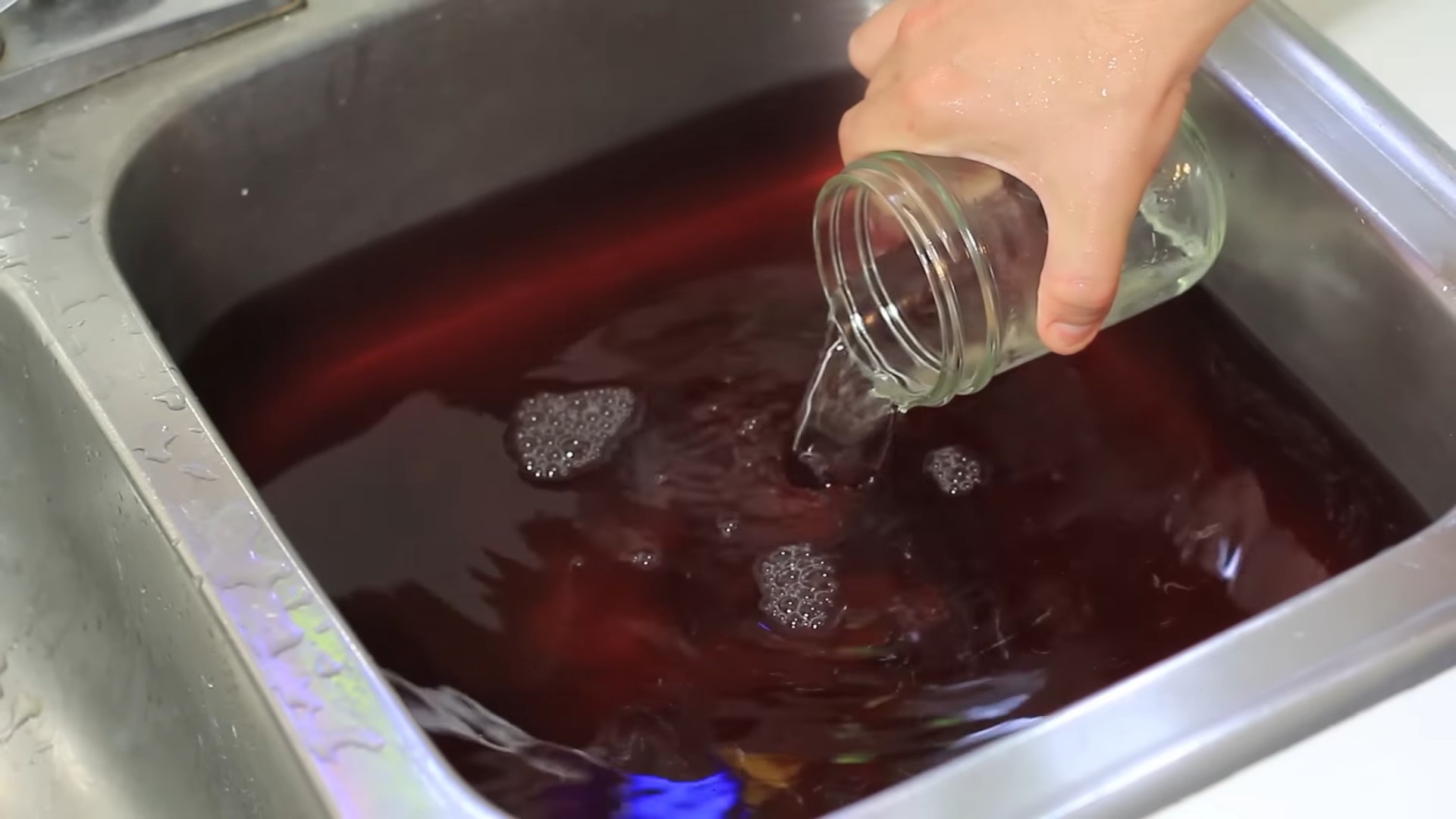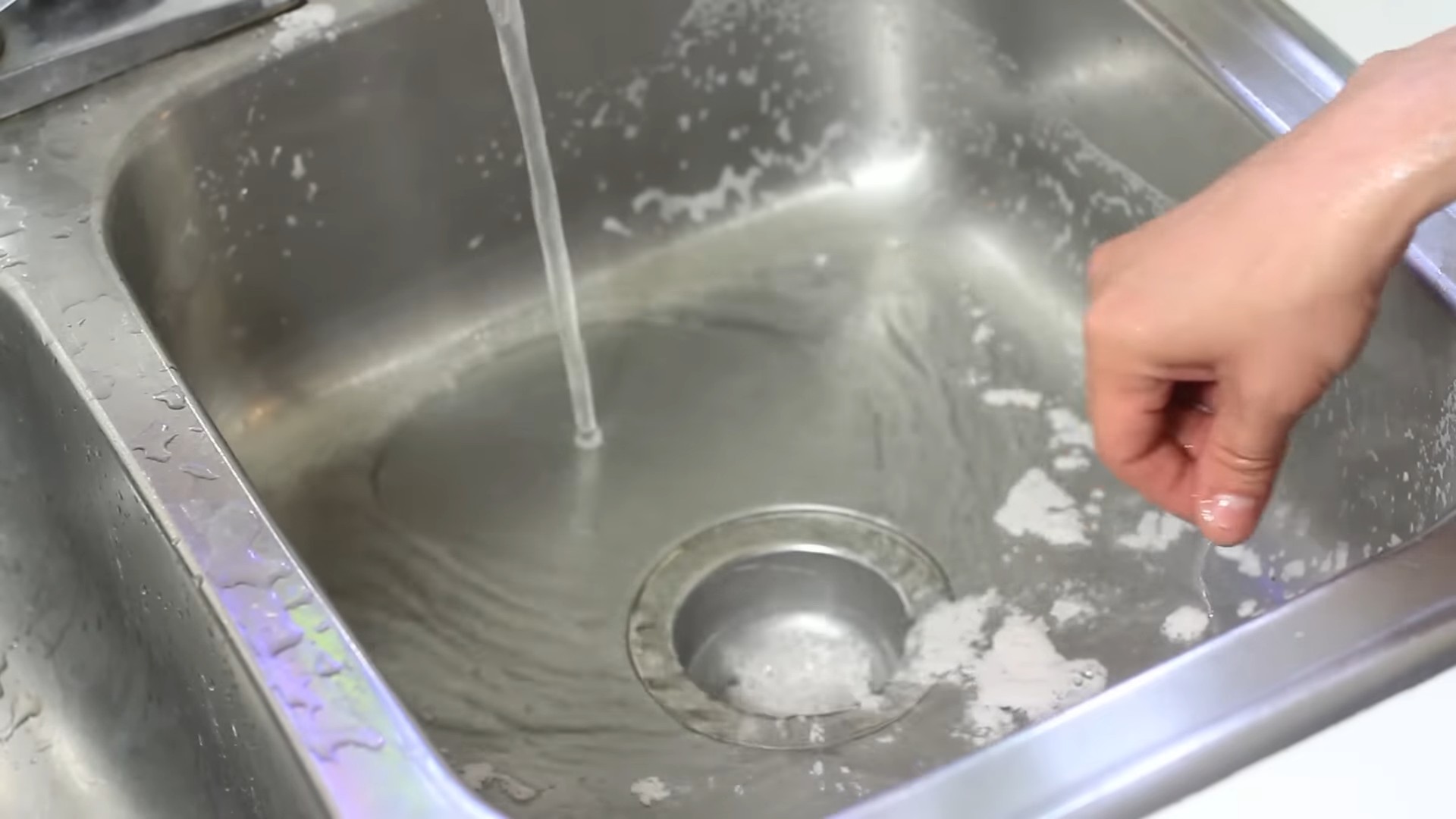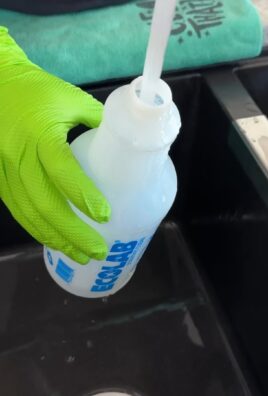Vinegar cleaning hacks are about to become your new best friend! Are you tired of spending a fortune on harsh chemical cleaners that promise the world but leave you with lingering odors and a lighter wallet? I know I was! That’s why I dove headfirst into the world of natural cleaning solutions, and let me tell you, the results have been amazing.
Vinegar, a staple in kitchens for centuries, boasts a surprisingly rich history. From ancient civilizations using it for preservation to its modern-day culinary applications, vinegar has always been a versatile substance. But did you know its cleaning prowess is just as impressive? Our grandmothers knew the secret, and now it’s time we rediscovered it!
In this article, I’m going to share my favorite vinegar cleaning hacks that will transform your home cleaning routine. We’ll explore everything from tackling stubborn stains to deodorizing your refrigerator, all with this simple, affordable, and eco-friendly ingredient. Why spend a fortune on commercial cleaners when you can achieve sparkling results with something you probably already have in your pantry? Let’s ditch the chemicals and embrace the power of vinegar!

Unlocking the Cleaning Power of Vinegar: DIY Hacks for a Sparkling Home
Hey there, fellow DIY enthusiasts! I’m so excited to share some of my favorite vinegar cleaning hacks with you. Vinegar is a true powerhouse when it comes to cleaning – it’s cheap, readily available, and incredibly effective. Plus, it’s a natural alternative to harsh chemical cleaners, making it a win-win for your home and the environment. Let’s dive in and discover how to harness the cleaning magic of vinegar!
General Vinegar Cleaning Tips
Before we get into the specific hacks, here are a few general tips to keep in mind:
* Dilution is key: While vinegar is a great cleaner, it’s also acidic. Always dilute it with water to avoid damaging surfaces. A 1:1 ratio (equal parts vinegar and water) is usually a good starting point.
* Test in an inconspicuous area: Before applying vinegar to a large surface, test it in a small, hidden area to ensure it doesn’t cause any discoloration or damage.
* Don’t mix with bleach: This is crucial! Mixing vinegar with bleach creates toxic chlorine gas, which is extremely dangerous.
* Ventilation is important: Vinegar has a strong odor, so make sure to open windows or turn on a fan when cleaning with it.
* Use white distilled vinegar: This is the most common and versatile type of vinegar for cleaning. Avoid using other types of vinegar, like apple cider vinegar or balsamic vinegar, as they may stain surfaces.
Cleaning Your Kitchen with Vinegar
The kitchen is often the dirtiest room in the house, but vinegar can help you tackle even the toughest messes.
Cleaning the Microwave
Microwaves can get pretty gross with splattered food and lingering odors. Here’s how to clean yours with vinegar:
1. Prepare the solution: In a microwave-safe bowl, mix 1 cup of water and 1/4 cup of white distilled vinegar.
2. Microwave the mixture: Place the bowl in the microwave and heat it on high for 5-7 minutes, or until the solution boils and the microwave is filled with steam.
3. Let it sit: Carefully remove the bowl (it will be hot!) and let the microwave sit with the door closed for another 5-10 minutes. The steam will loosen the grime and make it easier to wipe away.
4. Wipe it clean: Use a damp cloth or sponge to wipe down the interior of the microwave. The grime should come off easily. For stubborn spots, you can use a paste of baking soda and water.
5. Clean the turntable: Remove the turntable and wash it with soap and water. You can also soak it in a solution of vinegar and water for extra cleaning power.
Cleaning the Coffee Maker
Over time, mineral deposits can build up in your coffee maker, affecting the taste of your coffee. Vinegar can help descale your coffee maker and keep it running smoothly.
1. Prepare the vinegar solution: Fill the water reservoir of your coffee maker with a 1:1 solution of white distilled vinegar and water.
2. Run a brewing cycle: Turn on your coffee maker and let it run through a full brewing cycle.
3. Rinse with water: After the vinegar solution has run through, fill the water reservoir with fresh water and run another two or three brewing cycles to rinse out any remaining vinegar.
4. Clean the carafe: Wash the carafe with soap and water. For stubborn stains, you can fill the carafe with a solution of vinegar and water and let it soak for a few hours.
Cleaning the Dishwasher
Your dishwasher can also benefit from a vinegar cleaning. It helps remove food particles, mineral deposits, and odors.
1. Remove food debris: Make sure your dishwasher is empty and free of any large food particles.
2. Place vinegar in a dishwasher-safe cup: Fill a dishwasher-safe cup or bowl with 1 cup of white distilled vinegar and place it on the top rack of your dishwasher.
3. Run a hot cycle: Run your dishwasher on a hot cycle without any detergent.
4. Repeat monthly: For best results, repeat this process once a month.
Cleaning Cutting Boards
Cutting boards, especially wooden ones, can harbor bacteria. Vinegar is a great way to disinfect and deodorize them.
1. Wipe with vinegar: After using your cutting board, wipe it down with a cloth or sponge soaked in white distilled vinegar.
2. Let it air dry: Allow the vinegar to sit on the cutting board for a few minutes before rinsing it with water and letting it air dry.
3. For stubborn odors: For strong odors, like garlic or onions, you can sprinkle baking soda on the cutting board before wiping it with vinegar.
Cleaning Your Bathroom with Vinegar
The bathroom is another area where vinegar can really shine. It’s effective at removing soap scum, hard water stains, and mildew.
Cleaning Showerheads
Showerheads can get clogged with mineral deposits, reducing water pressure. Here’s how to clean them with vinegar:
1. Fill a plastic bag with vinegar: Fill a plastic bag with white distilled vinegar.
2. Secure the bag to the showerhead: Place the bag over the showerhead, ensuring that the showerhead is completely submerged in the vinegar. Secure the bag with a rubber band or twist tie.
3. Soak overnight: Let the showerhead soak in the vinegar overnight.
4. Remove the bag and rinse: Remove the bag and run the shower for a few minutes to flush out any remaining vinegar and mineral deposits.
5. Scrub if needed: If there are still some stubborn deposits, you can scrub them with an old toothbrush.
Cleaning Toilets
Vinegar is a natural and effective way to clean and deodorize your toilet.
1. Pour vinegar into the bowl: Pour 1-2 cups of white distilled vinegar into the toilet bowl.
2. Let it sit: Let the vinegar sit for at least 30 minutes, or even overnight for tougher stains.
3. Scrub and flush: Scrub the toilet bowl with a toilet brush and then flush.
4. For under the rim: For cleaning under the rim, you can use a spray bottle filled with vinegar to spray the area.
Cleaning Shower Doors and Walls
Soap scum and hard water stains can make shower doors and walls look grimy. Vinegar can help remove these stains and leave your shower sparkling.
1. Prepare the vinegar solution: Mix equal parts white distilled vinegar and warm water in a spray bottle.
2. Spray the surface: Spray the solution onto the shower doors and walls.
3. Let it sit: Let the solution sit for 10-15 minutes to loosen the soap scum and hard water stains.
4. Scrub and rinse: Scrub the surface with a sponge or brush and then rinse with water.
5. For stubborn stains: For stubborn stains, you can use a paste of baking soda and vinegar. Apply the paste to the stain, let it sit for a few minutes, and then scrub and rinse.
Other Vinegar Cleaning Hacks Around the House
Vinegar isn’t just for the kitchen and bathroom. Here are a few other ways you can use it around your home:
Cleaning Windows and Mirrors
Vinegar is a great natural alternative to commercial window cleaners. It leaves windows and mirrors streak-free and sparkling.
1. Prepare the vinegar solution: Mix equal parts white distilled vinegar and water in a spray bottle.
2. Spray the surface: Spray the solution onto the window or mirror.
3. Wipe with a clean cloth: Wipe the surface with a clean, lint-free cloth or paper towel.
4. Dry with a clean cloth: Dry the surface with another clean, dry cloth to prevent streaks.
Removing Carpet Stains
Vinegar can help remove many types of carpet stains, including pet stains, food stains, and dirt stains.
1. Blot the stain: Blot the stain with a clean cloth or paper towel to remove as much of the liquid as possible.
2. Prepare the vinegar solution: Mix equal parts white distilled vinegar and water in a spray bottle.
3. Spray the stain: Spray the solution onto the stain.
4. Let it sit: Let the solution sit for 5-10 minutes.
5. Blot the stain again: Blot the stain again with a clean cloth or paper towel.
6. Repeat if necessary: Repeat the process until the stain is gone.
7. Dry the area: Dry the area with a clean cloth or towel. You can also use a fan to speed up the drying process.
Deodorizing Laundry
Vinegar can help remove odors from your laundry and soften fabrics.
1. Add vinegar to the wash: Add 1/2 cup

Conclusion
So, there you have it! Unlocking the power of vinegar for a sparkling clean home is easier and more effective than you might have imagined. We’ve explored a range of vinegar cleaning hacks that are not only budget-friendly but also environmentally conscious, offering a welcome alternative to harsh chemical cleaners. From tackling stubborn grime in your bathroom to revitalizing your kitchen surfaces, vinegar proves to be a versatile and indispensable cleaning agent.
But why is this DIY approach a must-try? Beyond the cost savings and eco-friendliness, vinegar offers a unique cleaning power. Its acidity naturally breaks down grease, dissolves mineral deposits, and eliminates odors, leaving your home fresh and revitalized. Unlike some commercial cleaners that simply mask odors, vinegar neutralizes them at the source. Plus, you avoid the potential health risks associated with inhaling harsh chemicals, making it a safer option for you, your family, and your pets.
Don’t be afraid to experiment with variations to suit your specific needs and preferences. For a more fragrant cleaning experience, infuse your vinegar with citrus peels or herbs like lavender or rosemary. This adds a pleasant aroma without compromising the cleaning power. You can also adjust the vinegar-to-water ratio depending on the severity of the cleaning task. For tough stains, try using undiluted vinegar, but always test it on an inconspicuous area first to ensure it doesn’t damage the surface.
Consider these additional ideas to expand your vinegar cleaning repertoire:
* Revitalize your laundry: Add a cup of vinegar to your washing machine’s rinse cycle to soften clothes, remove detergent residue, and brighten colors.
* Clean your dishwasher: Pour a cup of vinegar into the bottom of your empty dishwasher and run a hot cycle to remove buildup and freshen the interior.
* Unclog drains: Pour a cup of baking soda down the drain, followed by a cup of vinegar. Let it fizz for 30 minutes, then flush with hot water.
* Clean your microwave: Microwave a cup of water and a few tablespoons of vinegar for several minutes. The steam will loosen grime, making it easy to wipe clean.
* Remove hard water stains: Soak items affected by hard water stains in a solution of vinegar and water.
We’re confident that once you experience the effectiveness and versatility of these vinegar cleaning hacks, you’ll be hooked! It’s a simple, sustainable, and satisfying way to keep your home clean and healthy.
So, ditch the expensive and potentially harmful chemical cleaners and embrace the natural power of vinegar. We encourage you to try these DIY tricks and discover the difference for yourself. And most importantly, we want to hear about your experiences! Share your favorite vinegar cleaning hacks, tips, and tricks in the comments below. Let’s build a community of eco-conscious cleaners and help each other create sparkling clean homes, naturally! We are eager to learn from your successes and troubleshoot any challenges you might encounter. Your feedback will help us refine these techniques and empower others to embrace the power of vinegar. Let’s make cleaning a little greener, one vinegar-powered hack at a time!
Frequently Asked Questions (FAQ)
Is vinegar safe to use on all surfaces?
While vinegar is a versatile cleaner, it’s not suitable for all surfaces. Avoid using it on natural stone surfaces like marble, granite, and limestone, as the acidity can etch and damage them. It’s also best to avoid using vinegar on waxed furniture, as it can strip the wax finish. Always test vinegar on an inconspicuous area before applying it to a larger surface to ensure it doesn’t cause any damage or discoloration. When in doubt, consult the manufacturer’s instructions for the specific surface you’re cleaning.
What type of vinegar is best for cleaning?
Distilled white vinegar is the most commonly recommended type of vinegar for cleaning. It’s inexpensive, readily available, and has a consistent acidity level, making it effective for a wide range of cleaning tasks. While other types of vinegar, such as apple cider vinegar, can also be used, they may have a stronger odor or contain impurities that could potentially stain some surfaces. For general cleaning purposes, distilled white vinegar is your best bet.
Will my house smell like vinegar after cleaning?
Vinegar has a distinct odor, but the smell typically dissipates quickly after cleaning. To minimize the vinegar smell, ensure proper ventilation by opening windows or using a fan. You can also add a few drops of essential oils, such as lemon or lavender, to your vinegar cleaning solution to mask the odor. The essential oils will not only add a pleasant fragrance but may also enhance the cleaning power of the vinegar.
Can I mix vinegar with other cleaning products?
It’s generally not recommended to mix vinegar with other cleaning products, especially bleach. Mixing vinegar with bleach can create toxic chlorine gas, which can be harmful to your health. Avoid mixing vinegar with ammonia-based cleaners as well, as this can create toxic fumes. When using vinegar for cleaning, it’s best to use it on its own or with water and essential oils.
How do I store my vinegar cleaning solution?
Store your vinegar cleaning solution in a clean, labeled spray bottle or container. Keep it out of reach of children and pets. It’s best to store the solution in a cool, dark place to prevent the vinegar from degrading. A vinegar cleaning solution can typically be stored for several months without losing its effectiveness.
What if vinegar doesn’t remove a stain completely?
For stubborn stains that vinegar alone can’t remove, try combining it with baking soda. Create a paste of baking soda and vinegar and apply it to the stain. Let it sit for a few minutes, then scrub gently with a brush or cloth. Rinse with water and repeat if necessary. You can also try using a stronger concentration of vinegar or letting it soak on the stain for a longer period. For particularly challenging stains, you may need to resort to a commercial stain remover, but always try vinegar first as a gentler and more eco-friendly option.
Is vinegar safe for septic systems?
Yes, vinegar is generally considered safe for septic systems. It’s a natural and biodegradable substance that won’t harm the beneficial bacteria in your septic tank. In fact, vinegar can even help to break down organic matter and prevent clogs in your septic system. However, it’s important to use vinegar in moderation and avoid pouring large quantities down the drain at once.
Can I use vinegar to clean my coffee maker?
Yes, vinegar is an excellent way to clean your coffee maker and remove mineral buildup. Fill the water reservoir with a solution of equal parts vinegar and water. Run the coffee maker through a full brewing cycle, then run it again with plain water to rinse out any remaining vinegar. This will help to keep your coffee maker clean and functioning properly.
How often should I use vinegar for cleaning?
The frequency of using vinegar for cleaning depends on your individual needs and preferences. For general cleaning tasks, such as wiping down countertops and cleaning floors, you can use vinegar several times a week. For more intensive cleaning tasks, such as descaling appliances or removing stubborn stains, you may only need to use vinegar occasionally. Experiment and find a cleaning schedule that works best for you and your home.




Leave a Comment